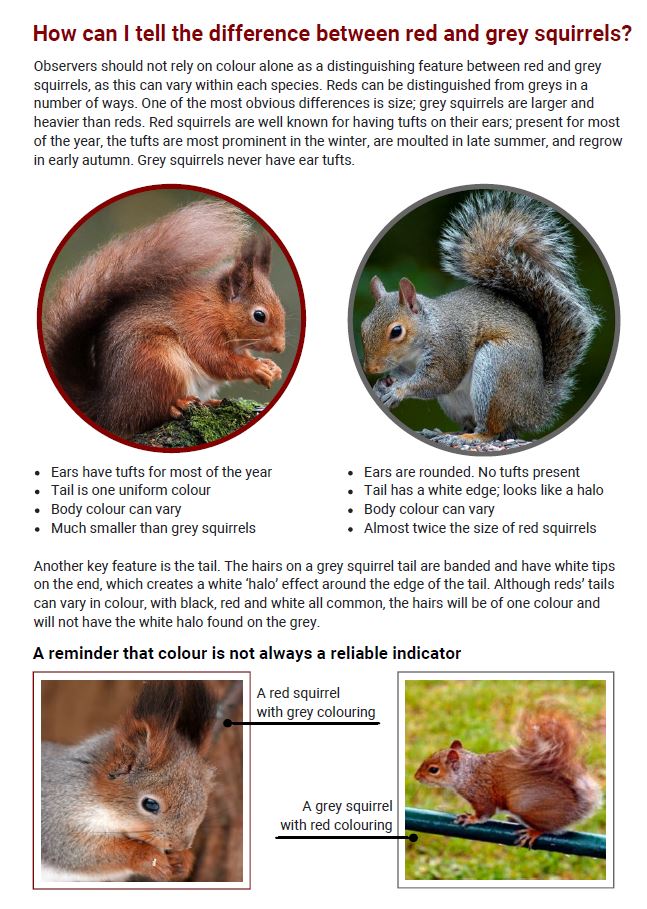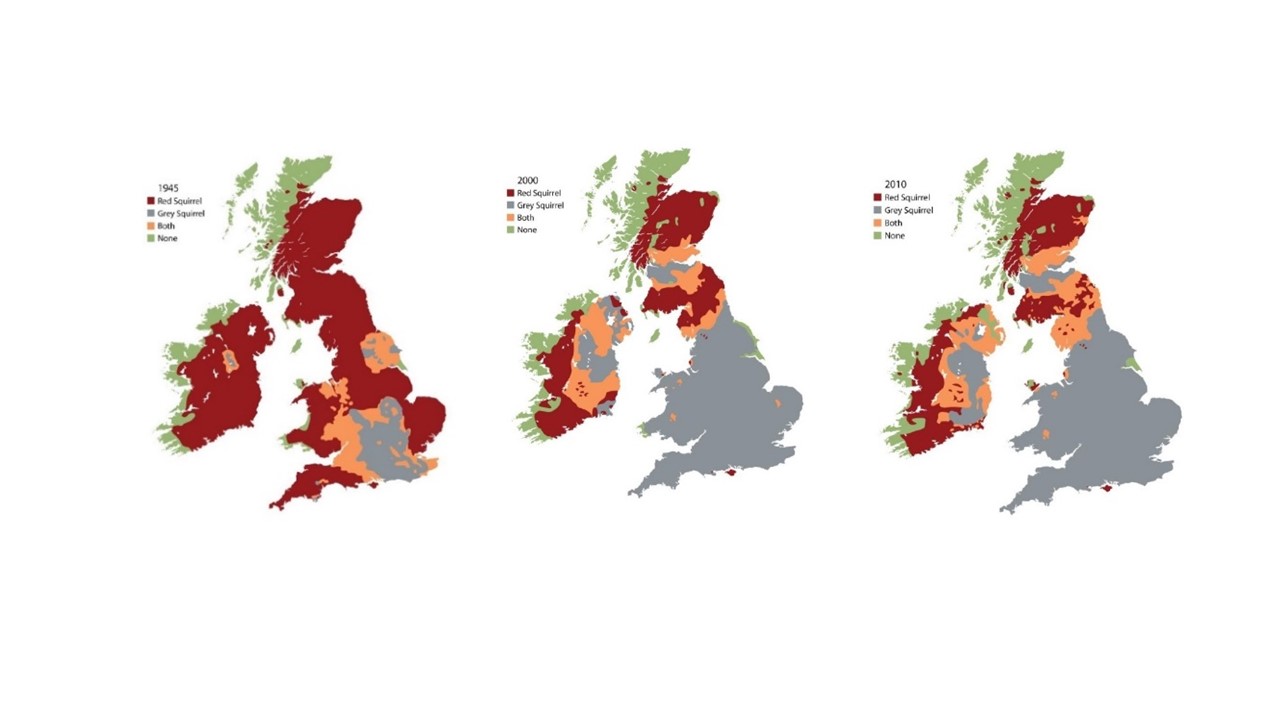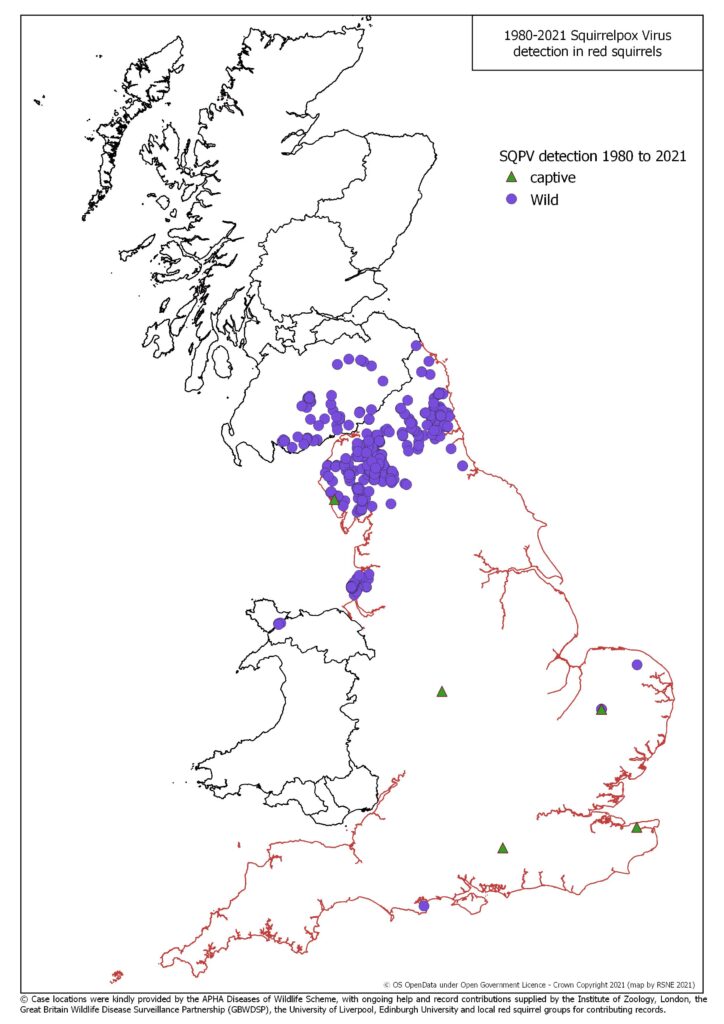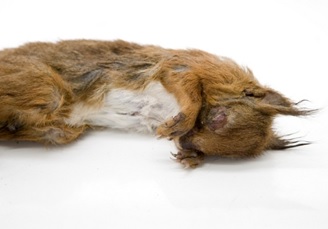Threats to the red squirrel
Although red squirrel populations are healthy in mainland Europe, the red squirrel is currently a suffering major decline in the UK. Numbers in the UK have fallen from a one-time high thought to be around 3.5 million, to a current estimated population of around 290,000. The population in England is thought to be as low as 29,500 (source: Mammal Society).
Predators, viruses and changes to the landscape all pose threats to our native red squirrel but the introduction of the grey squirrel from America is the main reason behind the sharp decline.
Grey Squirrels

Grey squirrels were first introduced to England from North America in 1876 as an ornamental species to populate the grounds of stately homes. Around 30 separate introductions occurred until 1930 when the damage caused by the grey squirrel was recognised and it was made illegal to release a grey squirrel to the wild. Grey squirrels have rapidly spread and colonised much of mainland England with detriment to our native red squirrel.

Greys are roughly twice as heavy as red squirrels and can tolerate living in much denser populations than red squirrels in mixed and broadleaf woodlands; with greys achieving up to 15 individuals per hectare (the size of a large football pitch) and reds achieving up to 2-3 per hectare.
Grey squirrels evolved on the eastern seaboard of America in oak and hickory forests. As a result, they have developed a resistance to a chemical called tannin, which is found in seeds such as acorns. Unripe acorns are particularly rich in tannins but are a high-energy food source. Red squirrels find tannins unpalatable, so grey squirrels can decimate crops of acorns before they ripen and become a viable food source for reds. Greys also raid caches (stores) of seeds that red squirrels have buried.
The combination of grey squirrels achieving higher densities, with a higher daily food requirement, and the ability to exploit tannin-rich seeds, provides grey squirrels with a very strong ‘competitive advantage’ over reds in mixed and broadleaf woodland. Failure to gain enough food prevents female reds from reproducing, and existing members of the population can gradually starve. Through the effects of competition alone, greys will replace reds well within 15 years in this habitat type.

Squirrelpox Virus
The most significant threat associated with grey squirrels is the spread and transmission of a disease called squirrelpox virus (SQPV). It can take only one grey squirrel to introduce this virus to a local population of red squirrels and then the virus can spread throughout the reds with devastating effect. Where a grey squirrel introduces SQPV, red squirrel population decline has been observed at between 17-25 times quicker than through competition alone.

(c) Moredun Research Institute
RSNE work closely with the Animal Health & Veterinary Laboratories Agency (AHVLA), the organisation responsible for post-mortems on dead reds in Cumbria & Northumberland. RSNE produce maps on behalf of the AHVLA to illustrate confirmed cases of SQPV.
Adenovirus
Red squirrels are susceptible to other diseases and illnesses aside from SQPV. Adenovirus is a relatively recently identified threat, and its impact on wild populations is still not fully understood.
It is an enteric (intestinal) virus, therefore reds show no outward signs of the disease, however, animals are often found dead. Current research by the APHA is continuing to shed light on the impacts of this disease as studies continue to identify confirmed cases.
